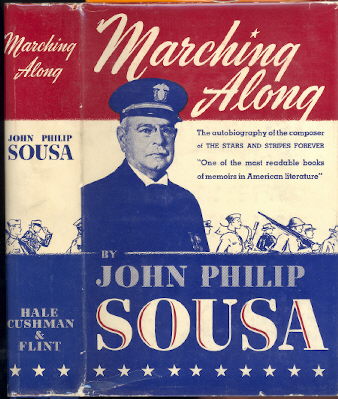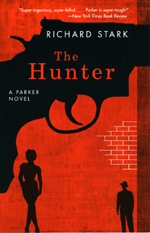“I sat down in the middle of the garden, where snakes could scarcely approach unseen, and leaned my back against a warm yellow pumpkin. There were some ground-cherry bushes growing along the furrows, full of fruit. I turned back the papery triangular sheaths that protected the berries and ate a few. All about me giant grasshoppers, twice as big as any I had ever seen, were doing acrobatic feats among the dried vines. The gophers scurried up and down the ploughed ground. There in the sheltered draw-bottom the wind did not blow very hard, but I could hear it singing its humming tune up on the level, and I could see the tall grasses wave. The earth was warm under me, and warm as I crumbled it through my fingers. Queer little red bugs came out and moved in slow squadrons around me. Their backs were polished vermilion, with black spots. I kept as still as I could. Nothing happened. I did not expect anything to happen. I was something that lay under the sun and felt it, like the pumpkins, and I did not want to be anything more. I was entirely happy. Perhaps we feel like that when we die and become a part of something entire, whether it is sun and air, or goodness and knowledge. At any rate, that is happiness; to be dissolved into something complete and great. When it comes to one, it comes as naturally as sleep.”
Willa Cather, My Ántonia
Archives for August 2008
SOUSA THE STORYTELLER
“Now that I’ve read John Philip Sousa’s autobiography, I’m surprised that it isn’t better known to historians of American music. Like Louis Moreau Gottschalk’s Notes of a Pianist before it, Marching Along provides a priceless glimpse of the lost world of music making in Victorian America…”
GALLERY
Diebenkorn in New Mexico (Phillips Collection, 1600 21st St. NW, Washington, D.C., up through Sunday). If you haven’t yet seen this important show of abstract paintings and works on paper, don’t delay–it closes this weekend. Richard Diebenkorn created these works when he lived in Albuquerque from 1950 to 1952, and the best of them suggest with uncanny exactitude the austere yet wrenchingly vivid New Mexico landscape (TT).
TT: Greasepaint under the redwoods
In today’s Wall Street Journal drama column I review three shows, Burn This, All’s Well That Ends Well, and Bach in Leipzig, currently being performed at Shakespeare Santa Cruz, plus an off-Broadway show, the Irish Repertory Theatre’s production of Around the World in 80 Days. I liked them all. Here’s an excerpt.
* * *
Outdoor theater festivals are like picnics–the food tastes better when eaten al fresco, but sometimes it rains. Shakespeare Santa Cruz, founded in 1981, splits the difference by performing in two different theaters, one outside and the other inside, both of them deep within the woodsy campus of the University of California, Santa Cruz. Each summer the company presents two Shakespeare plays in a natural amphitheatre located in a redwood grove and two modern plays in a nearby 527-seat indoor theater equipped with stadium seating and a thrust stage. I’ve been hearing exciting things about the festival, so I flew out to California last weekend and caught three shows there, all of which were worthy of their sylvan setting.
 Lanford Wilson’s “Burn This,” to be sure, no longer looks quite so fresh as it did in the long-ago days when the wisecracking gay second-banana character had yet to become a cliché. Twenty-one years after it transferred to Broadway, “Burn This” can now be seen for what it is, a sentimental variation on “A Streetcar Named Desire” in which the crazy girl is a workaholic choreographer who lives in a converted loft and longs to get a life, the tough-guy stud is a closet aesthete and everybody lives happily ever after. No wonder it ran for 437 performances!
Lanford Wilson’s “Burn This,” to be sure, no longer looks quite so fresh as it did in the long-ago days when the wisecracking gay second-banana character had yet to become a cliché. Twenty-one years after it transferred to Broadway, “Burn This” can now be seen for what it is, a sentimental variation on “A Streetcar Named Desire” in which the crazy girl is a workaholic choreographer who lives in a converted loft and longs to get a life, the tough-guy stud is a closet aesthete and everybody lives happily ever after. No wonder it ran for 437 performances!
On the other hand, Mr. Wilson is a playwright of quality, and if “Burn This” has a core of mush, it’s also well made, well written, very funny when it wants to be and an effective vehicle for four interesting actors and a director who knows how to shift them into overdrive. Shakespeare Santa Cruz delivers the goods…
If you long for theatrical froth whipped up with insolent panache, you’ll have a hard time finding a more satisfying show than the Irish Repertory Theatre’s production of “Around the World in 80 Days,” Mark Brown’s stage version of Jules Verne’s 1873 novel about a stiff-upper-lipped Londoner who uproots himself from the Reform Club to go charging around the globe. Co-produced with Cincinnati Playhouse in the Park, the company that brought you John Doyle’s miniaturized revival of “Company,” “Around the World in 80 Days” is performed on a very, very small stage on which Phileas Fogg (Daniel Stewart) and his trusty servant Passepartout (Evan Zes) circumnavigate the world via steamship, express train and chartered elephant. The cast consists of five actors and two “Foley artists” who supply sound effects and incidental music in full view of the audience….
* * *
Read the whole thing here.
TT: Sousa the storyteller
 Regular readers of this blog may recall that I ran into the tuba-playing son of a member of the Sousa Band on one of my recent theater-related journeys. He loaned me a copy of Marching Along, John Philip Sousa’s long-out-of-print 1928 autobiography, which I read and found (somewhat to my surprise) to be utterly fascinating.
Regular readers of this blog may recall that I ran into the tuba-playing son of a member of the Sousa Band on one of my recent theater-related journeys. He loaned me a copy of Marching Along, John Philip Sousa’s long-out-of-print 1928 autobiography, which I read and found (somewhat to my surprise) to be utterly fascinating.
I resolved at once to write a “Sightings” column about Sousa and his memoirs, and the fruits of that resolution will be published in tomorrow’s Wall Street Journal. It turns out that Sousa, who also wrote three full-length novels and 138 newspaper and magazine articles, was as vigorous and engaging a prose stylist as he was a composer, and Marching Along offers a vivid glimpse of his offstage personality.
To find out more about Sousa and Marching Along, pick up a copy of Saturday’s Journal and see what I have to say.
UPDATE: Read the whole thing here.
TT: Almanac
“The web of our life is of a mingled yarn, good and ill together; our virtues would be proud if our faults whipped them not, and our crimes would despair if they were not cherished by our virtues.”
William Shakespeare, All’s Well That Ends Well
TT: Parker’s back
 A few months ago I announced in this space that the University of Chicago Press would be bringing out a uniform edition of the Parker crime novels of “Richard Stark,” the nom de plume of Donald E. Westlake. Interested parties will be pleased to know that the first three titles in the series, The Hunter, The Man With the Getaway Face, and The Outfit, have just been published. (I reviewed them here.)
A few months ago I announced in this space that the University of Chicago Press would be bringing out a uniform edition of the Parker crime novels of “Richard Stark,” the nom de plume of Donald E. Westlake. Interested parties will be pleased to know that the first three titles in the series, The Hunter, The Man With the Getaway Face, and The Outfit, have just been published. (I reviewed them here.)
For more information about the Parker Edition, visit the blog of the University of Chicago Press, where you will also find a link to a very interesting interview with Donald Westlake:
When Bucklin Moon of Pocket Books said he wanted to publish The Hunter, if I’d help Parker escape the law at the end so I could write more books about him, I was at first very surprised. He was the bad guy in the book.
More than that, I’d done nothing to make him easy for the reader; no smalltalk, no quirks, no pets. I told myself the only way I could do it is if I held onto what Buck seemed to like, the very fact that he was a compendium of what your lead character should not be. I must never soften him, never make him user-friendly, and I’ve tried to hold to that.
Read the whole thing here.
OGIC: Fortune cookie
“If my discoveries are other people’s commonplaces I cannot help it–for me they retain a momentous freshness.”
Elizabeth Bowen
